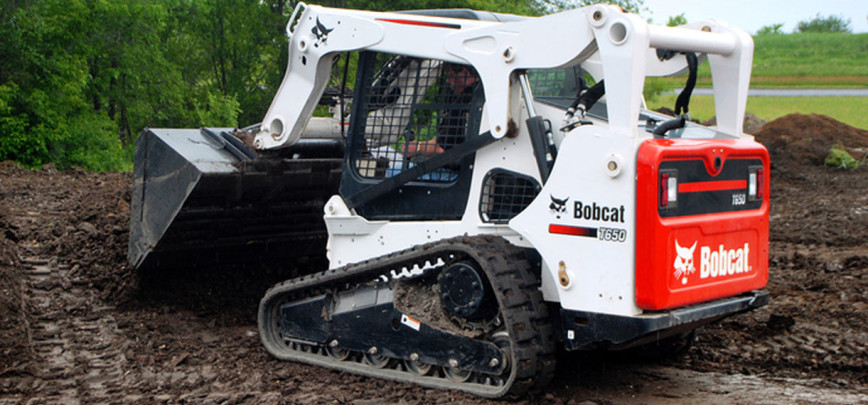How Improper Land Grading Can Be Your Worst Nightmare

Land grading is the art of sculpting dirt in the landscape to promote proper water drainage. It sounds straightforward at the outset but can be tricky to achieve without the proper tools and know-how.
For example, would you rather have the water from a heavy rain flow away from your home and eventually settle in a large puddle, or have the water flow away in a narrow stream until it completely dissipates?
Given the option, you’d probably take the stream over the puddle.
Land Grading for New Constructions
Land grading is commonly associated with new constructions, and rightfully so. On large properties, houses, barns and other outbuildings are typically situated on the highest point possible for this exact purpose. In flat or low-lying areas, there is no luxury of choosing an area unlikely to flood. Instead, floods are avoided with smart land grading. At the very least, a raised building pad is created to keep the building higher than the immediate surrounding area.
But new constructions and building pads aren’t the only uses for land grading. Proper water drainage is also an important consideration for keeping gardens in bloom and keeping roadways safe.
Land Grading as Part of a Landscape Design
Before you invest a lot of time, effort and money into creating a beautiful home garden, you need to think about land grading. Even wet, soggy lawns can be transformed into well-draining lawns with the right equipment and skill.
Grading the landscape is important before you dive into full-blown planting mode, as it’s much easier to do when there aren’t any plants to work around. Retroactive grading that is performed as an after-thought is tricky and not always successful.
However, prepping a garden for proper drainage is crucial to the health of the garden. Look up any popular flower, tree or even vegetable variety, and the words “needs well-drained soil” will pop up anywhere you look. Plants left in standing water can quickly develop root-rot and die. Unlike other plant problems like nutrient deficiencies or pests, drainage problems are not easily solved by any kind of product you can buy off the shelf. Grade the area first and avoid a whole host of problems in the future.
Land Grading for Roadways
If you’ve ever been driving on the highway during a rain storm and have plowed into a puddle, you can appreciate the role of land grading in keeping roadways safe. Standing water in the road is more than just inconvenient. It’s also dangerous (even if shallow) and can cause damage to the road. Keeping water draining away from the road and preventing it from pooling in the road is serious business.
Driveways, curbs, sidewalks and parking lots require the same kind of care and consideration. Without proper grading, these structures are all rendered useless during or after a heavy rain.
Erosion Prevention and Environmental Considerations
With any grading project, no matter its purpose, erosion is a very real and pressing concern. Soil is often cut from one area of the property and used to fill in another area in order to achieve the correct slope or grade. This exposes a lot of soil. If left exposed, the soil will easily erode with any amount of wind, water or traffic. The sediment that is washed away can then interfere with the drainage pattern by clogging those channels.
On the other hand, land grading can successfully slow the erosion of steep slopes by decreasing their contours.
But whether erosion control is the main purpose or a by-product of land grading, the area should be populated with vegetation as soon as possible. In many cases this will mean sowing grass seeds.
Land grading professionals should take the time to ensure “buffer zones” of vegetation are left between the construction area and any vulnerable environments, such as water ways, to prevent sedimentation. Grading in sections rather than all at once is another practical method. Finally, leaving native plants in the ground and working around them also supports the local environment and aids in erosion control.
The bottom line is this: if you grade the land, you won’t regret it. The same cannot be said for those who choose not to have their land properly graded.
Join our newsletter
Subscribe to our weekly newsletter chalked full of useful tips, techniques, and design goodies.

